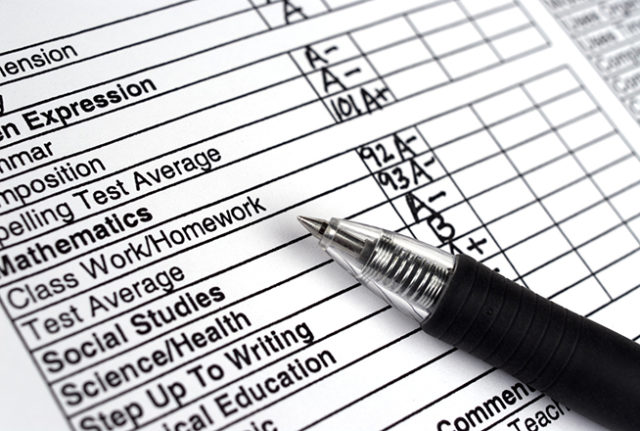Here’s a new piece that’s been going around the Vermont ed community. It’s an article by two Vermont educators (both of whom I know casually) about the future of proficiency-based learning.
My first thought was — it’s refreshing that someone’s actually talking about proficiency based learning (PBL) again. This was the — no joke — revolution in teaching and learning we spent four years trying to wrap our minds around and sell our communities and ourselves on but for the last two years, it’s felt like everyone collectively moved on.
Now the conversation’s about race, social justice, and that all-encompassing word “equity” (has there ever been a word with more hope pinned to it than “equity” for today’s educators?) PBL’s almost a memory for the thought-leader class, even as this year the first seniors will graduate under this new system. PBL is very much on the minds of everyone I work with down in the trenches . . . and despite what these authors imply, there are some real problems looming that don’t just have to do with GPAs and college admissions.
Let me be clear: this is a great article. They do a great job outlining the importance of PBL. I’ve written before about the advantages. In a way, I think the rest of the country could learn a lot from the sort of clarity, preparation, and shift-of-focus we’ve worked through the Vermont ed system. That said, there are important problems in PBL that need to be faced.
First, more data is not better. In fact, too much data can be unhelpful. PBL is predicated on producing lots and lots of data. Once you start dividing subject matter into proficiencies, and from there into sub-proficiencies (“performance indicators”), you suddenly amass a lot of grades. Now you’ve got there are two problems: first, it takes teachers a long time to record all this, and second — more important — if all this data doesn’t funnel into some easily digestible number or letter, it suddenly becomes impossible for any layperson to tell how the kid is doing.
Where I work, most subjects have five or six main proficiencies. For a student with a full load of courses, that’s 36 different “grades.” Add into that seven “transferable skills” and now each kid has well over 40 separate items on a report card. Suddenly it’s impossible to tell how things are going.
This is especially a problem because PBL prides itself on measuring student achievement, not work completion. Fine. But most parents (and advisers) like being able to see one grade per class — and therefore to quickly see if a kid’s succeeding or not.
PBL proposes only to measure a student on whether he’s mastering the skills. But a large part of the function of grades — particularly since the advent of digital portals that allow parents and students to track in real-time how they’re doing — is to give an alter as to how a kid’s doing. Is he keeping up with the work? Is he overwhelmed and letting assignments pile up?
Time was, if you slacked off, that B+ in Geometry quickly sank to a C-. Your mom saw that pretty quickly, saw what you were missing in the online gradebook, and took away the car keys for a few weeks until it was all sorted out.
But now, Mom can’t tell if you’re missing anything: those missing assignments are buried down in some transferable skill hole that doesn’t affect your overall math grade– because now there’s no such thing. Mom can’t make heads or tails of the 13 different grade categories you have. Now she can’t threaten you, and she definitely can’t help you.
Yes, PBL gives *teachers* a lot of new data to look at — and to potentially use to inform instruction. But this data comes at the cost of their time: they must take the time to create, score, and enter the results from massive, many-categoried new rubrics. Most teachers I know spend considerably more time now entering grades. Is that extra clarity about where a student is worth the extra hours and hours of grade entry?
And while the microproficiences of content skills matter greatly to teachers — to subject area experts charged with improving children’s specific skills in expository writing, or in solving quadratic functions, or in understanding mass and matter — in my experience, they don’t matter much to parents. It’s rare you hear a parent come to a conference and say, “So I see that his research writing is lagging compared to his expressive writing — give me a deeper update on that. Is he making progress on properly formatting his Works Cited pages?”
Yeah, right. They’re going to ask if he’s keeping up with his work and getting better at writing. They want the holistic view, the big picture.
Is the specificity of PBL helpful for students? Sometimes. Sometimes it’s important for students to see exactly what they have to work on. That helps at an instructional level, in the classroom, in the writing conference. But when it comes to their overall grades, kids want the big picture, too. How am I doing?
That’s how I think of PBL: great for teachers, sometimes helpful for students, in my view, pretty unhelpful for anyone else.
As anyone who has ever taught distracted teenagers knows, simplicity is key. Less is more. Focus on what’s important, and don’t overwhelm. The traditional Carnegie grading system had a lot of flaws, and I’m glad to see how PBL has helped correct them, but the old system communicated important data about how a student was doing as a student in a given class that a pure proficiency system, despite all its numbers, just doesn’t do. There was an important simplicity to it. Like with all such simplicity, there’s a danger to it of oversimplifying. But at least there was clarity.
I hope we can find a blend.
